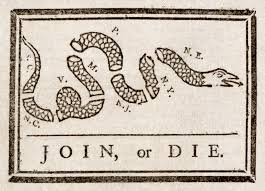The Battle of Brandywine: — Part 10 of 10
A Great Save
Edward Hector, a black soldier in the 3rd Pennsylvania Artillery, valiantly saved a few wagon loads of ammunition and arms in the tumult. But most of the equipment was left behind. Fortunately, Washington had ordered the baggage removed to Chester the day before, so at least that was safe.
Wayne posted a small brigade armed with four cannon, at Painter's Crossroads to cover the troops retreating toward Chester. They kept the main road to Chester open not only for Wayne's retreating men, but Nash's North Carolinians, and the rear guard of Sullivan's troops who were falling back from Dilworth.
Greene's Men Dig In
Greene's men held the Sandy Hollow area. Fighting under Greene was brigadier General, Peter Muhlenberg, a Lutheran minister who had once served in the Prussian army. As he rode along the defensive line rallying the Virginia troops, he was recognized by some Hessians who called him by his nickname, "Devil Pete." Though the Americans fought well they were forced back. An aide-de-camp to General Howe wrote, "By six o'clock our left wing still had not been able to advance. Here the rebels fought very bravely and did not retreat until they heard in their rear General Knyphausen's fire coming nearer....The Rebels found themselves between two fires. This probably caused them to leave their strong post and retreat from their right wing on the Road to Chester.
After warring for nearly two hours the outnumbered Americans began to give way.
Surprise Party
At about 7:30, some of General Weedon's men and North Carolina troops under Brigadier General Nash surprised Howe's troops and put a damper on the British victory party. They had come on in the rear and drew up in a semicircle just north and west of the Dilworth Crossroads. Here they surprised Howe's victorious troops who had just taken the field from Greene.
"The heat of the Action fell chiefly on the 64th Regt who suffered considerably, enduring with the utmost steadiness a very heavy fire, which lasted till Dark, when the Rebels retreated in great Panick taking the road to Chester."
The American's last stand was supported by Casimir Pulaski who led a stunning cavalry charge. Pulaski had been present at Brandywine as an observer but received Washington's permission to organize a group of horseman into an ad hoc unit. It was not enough and the Americans retreated toward Chester.
This last American foray probably convinced Howe that it would be too dangerous to try and follow the Americans for a nighttime knockout. Besides which, the day had been exhausting. Howe's troops marched 17 miles in 11 hours, and had fought three pitched battle in the space of six hours. A British lieutenant pointedly summed up the rigors the British had been recently exposed to:
We had the Honour & with our Fire closed the Day. The Fatigue of the Day were excessive; some of our best Men were obliged to yield, one of the 33 dropped dead [of heat stroke] nor had we even Daylight, we could not make any thing of a pursuit. If you knew the weight a poor Soldier carries, the length of time he is obliged to be on foot for a train of Artillery to move 17 miles, the Duties he goes thro' when near an Enemy, that the whole night of the 9th we were marching, you would say we had done our Duty on the 11 to beat an Army strongly posted, numerous & unfatigued.

Major John Andre
British Casualties
Casualties at Brandywine were strewn across a 10-square mile area of the battlefield, making final determinations particularly difficult. General Howe in his official report to Parliament counted: 90 killed, 488 wounded and 6 missing in action. Howe, once again clearly underestimated casualty figures.
Before the Battle of Germantown, an adjutant in the British army, reckoned British killed and wounded at 1,976. This is the exact same number arrived at by Jacob Hitzheimer, a civilian at Brandywine who recorded the number of British wounded in a diary entry. Some reports have the Queens Rangers losing 290 out of 480 men, while Ferguson's Riflemen suffered 46 casualties out of 80.
The 2nd Light Infantry and 2nd British Guards who were involved in some of the fiercest fighting at Brandywine (including hand-to-hand combat) are listed as having lost 612 of 1,740 troops.
American Casualties
Major General Greene estimated American losses at 1,200 men. He also reported the loss of 10 irreplaceable cannon and a Howitzer. A Hessian officer listed the American casualty and captured rate at 1,300. An American officer under Brigadier General Nash reported British losses at 1,960 and the Americans at 700.



